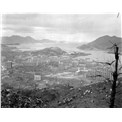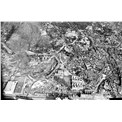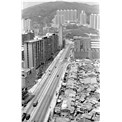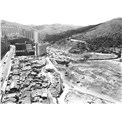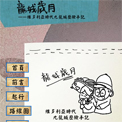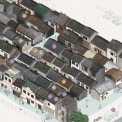-
History & Society
- Education in Pre-war Hong Kong
- History of Taikoo Sugar Refinery
- Hong Kong Products Exhibition
- Local Festivals Around the Year
- Post-war Industries
- Pre-war Industry
- The Hong Kong Jockey Club Archives
- Tin Hau Festival
- Memories We Share: Hong Kong in the 1960s and 1970s
- History in Miniature: The 150th Anniversary of Stamp Issuance in Hong Kong
- A Partnership with the People: KAAA and Post-war Agricultural Hong Kong
- The Oral Legacies (I) - Intangible Cultural Heritage of Hong Kong
- Hong Kong Currency
- Hong Kong, Benevolent City: Tung Wah and the Growth of Chinese Communities
- The Oral Legacies Series II: the Representative List of the Intangible Cultural Heritage of Hong Kong
- Braving the Storm: Hong Kong under Japanese Occupation
- A Century of Fashion: Hong Kong Cheongsam Story
Geography & EnvironmentArt & Culture- Calendar Posters of Kwan Wai-nung
- Festival of Hong Kong
- Ho Sau: Poetic Photography of Daily Life
- Hong Kong Cemetery
- Sketches by Kong Kai-ming
- The Culture of Bamboo Scaffolding
- The Legend of Silk and Wood: A Hong Kong Qin Story
- Journeys of Leung Ping Kwan
- From Soya Bean Milk To Pu'er Tea
- Applauding Hong Kong Pop Legend: Roman Tam
- 他 FASHION 傳奇 EDDIE LAU 她 IMAGE 百變 劉培基
- A Eulogy of Hong Kong Landscape in Painting: The Art of Huang Bore
- Imprint of the Heart: Artistic Journey of Huang Xinbo
- Porcelain and Painting
- A Voice for the Ages, a Master of his Art – A Tribute to Lam Kar Sing
- Memories of Renowned Lyricist: Richard Lam Chun Keung's Manuscripts
- Seal Carving in Lingnan
- Literary Giant - Jin Yong and Louis Cha
Communication & Media- Hong Kong Historical Postcards
- Shaw Brothers’ Movies
- Transcending Space and Time – Early Cinematic Experience of Hong Kong
- Remembrance of the Avant-Garde: Archival Camera Collection
- Down Memory Lane: Movie Theatres of the Olden Days
- 90 Years of Public Service Broadcasting in Hong Kong
- Multifarious Arrays of Weaponry in Hong Kong Cinema
-
History & SocietyGeography & EnvironmentArt & Culture
-
View Oral History RecordsFeatured StoriesAbout Hong Kong Voices
-
Hong Kong Memory
Villages in the New Territories – Muk Min Ha Village
Muk Min Ha Village once existed at Castle Peak Road in Tseun Wan. It was believed that inhabitants from Fujian Province, China first moved into Muk Min Ha Village about three hundred years ago. The village’s name derived from the cotton trees nearby (in Cantonese ‘Muk Min’ stands for ‘cotton tree’). Unlike other villages in the area, such as Yeung Uk Village or Sam Tung Uk Village, Muk Min Ha Village did not play a significant role in the history of Tsuen Wan. The villagers of Muk Min Ha lived a quiet agricultural life for many years.
Things changed after the war. The low-lying Muk Min Ha Village had always suffered from flooding during bad weather, due to difference in road levels caused by public works. The village flourished following a surge in population. A survey conducted in the 1950s recorded a population of approximately 5000 in Muk Min Ha Village. Some villagers set up squatter factories, which deteriorated the living condition.
The government determined to have the MTR construction work in Tsuen Wan commenced in 1978. Many people and factories were moved out, including those in Muk Min Ha Village, which was once regarded as ‘the most industrialised village’. The village was finally moved to the nearby Fu Yung Shan to make way for the construction.
The original site of the village now stood Nan Fung Centre near Tsuen Wan MTR station. The cotton tree blossom would never come back.
Photos
Copyright © 2012 Hong Kong Memory. All rights reserved.






